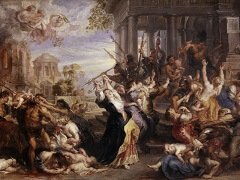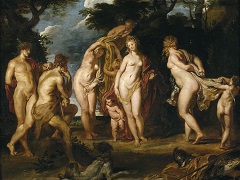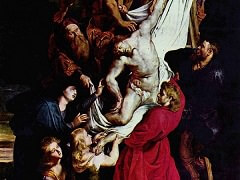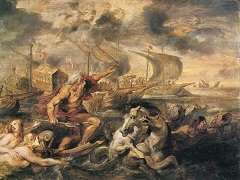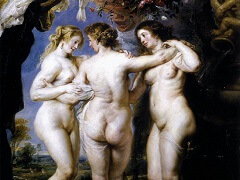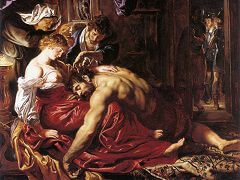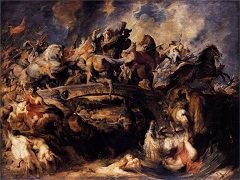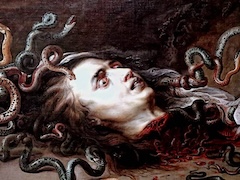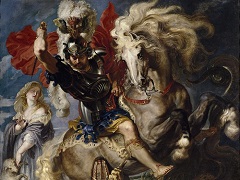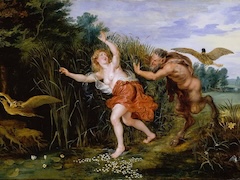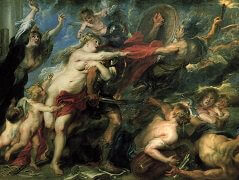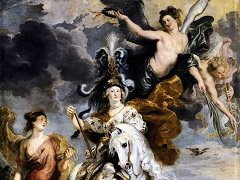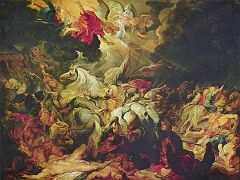The Rape of the Daughters of Leucippus, 1617 by Peter Paul Rubens

The lyricism, eloquence and sensuality that characterise his entire oeuvre are already apparent in Rubens' mythological compositions of 1600-1620. These are often vigorous, earthy works, such as the Rape of the Daughters of Leucippus.
The two daughters of King Leucippus were betrothed to a set of twins, cousins of Castor and Pollux. But the latter pair carried the maidens off and had sons by them. Armed warriors are seen in the act of seizing the naked maidens and bearing them away on horseback.
The composition of this painting opens upward like the flowering of a bouquet. The two divergent diagonals rise from the base of the painting, where the feet of captive and aggressor are placed side by side. The volumes ascend from this point, harmoniously residing on successive points of equilibrium, while the luminous white forms of the nude victims contrast with the tanned, caparisoned bodies of their hirsute rapists. Here Rubens' classicising and Baroque tendencies are completely reconciled.



